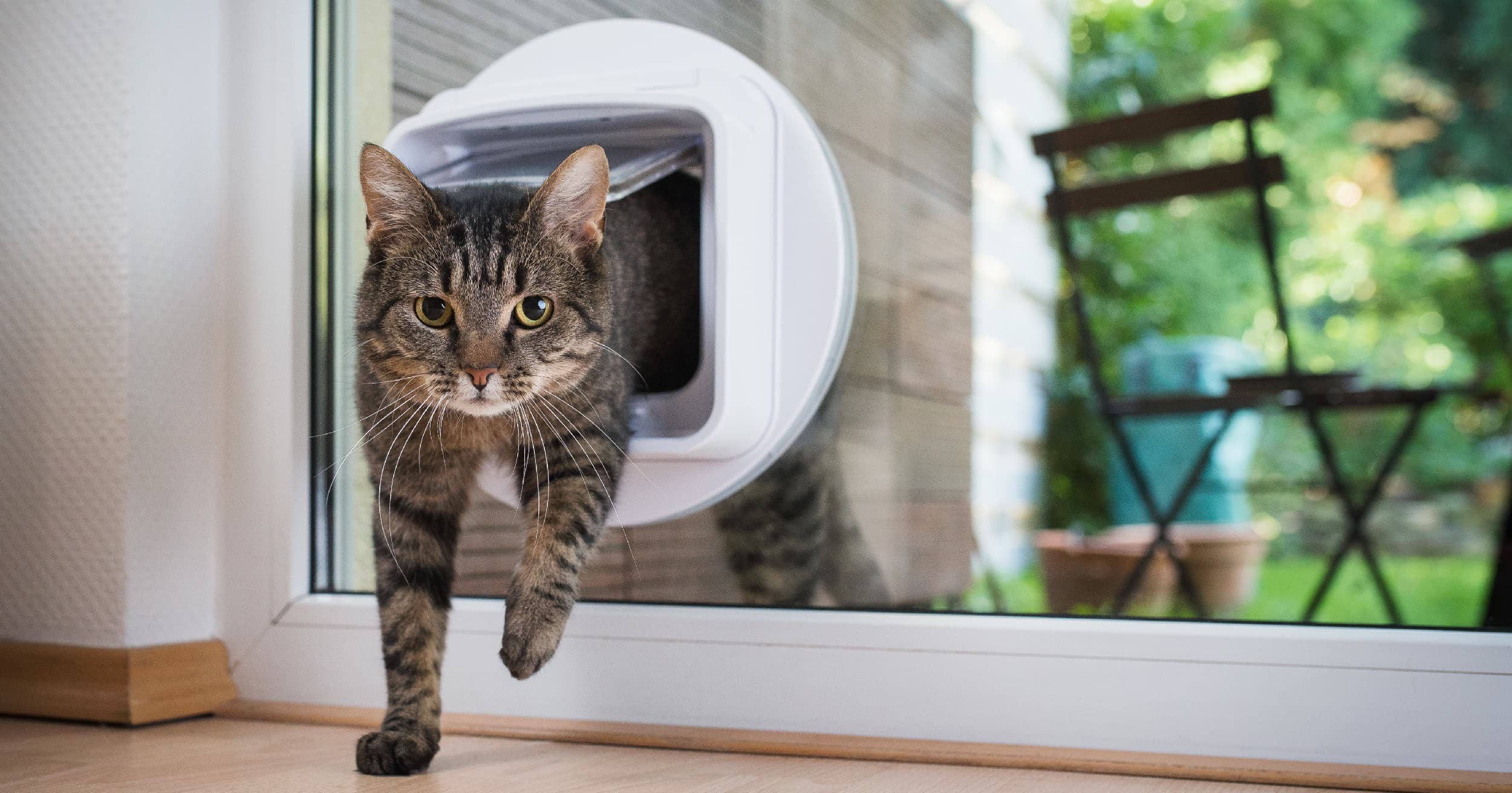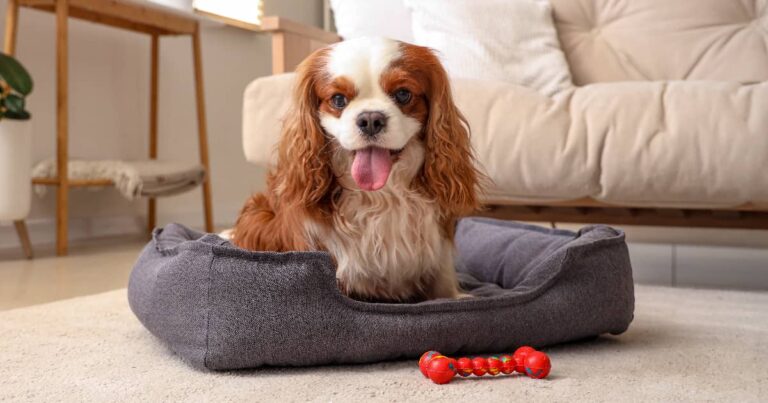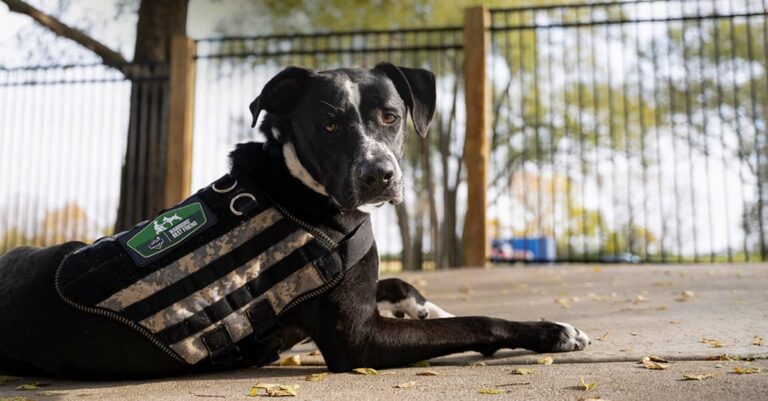Do you have a chubby cat who likes to finish everyone else’s meals (sometimes before they’re done eating)? Do you dream of a dog door that will automatically open early in the morning so you can sleep in? If you answered yes to these questions, we have some good news — your pet’s microchip can help.
While a microchip is first and foremost designed to help reunite the two of you if your pet becomes lost, it can be useful around your house, too. Here are some ideas for how you can use your pet’s microchip for other purposes, as well as a reminder about why you should microchip your pet in the first place.
Control Who Eats What When
Pet feeders activated by your cat or dog’s microchip ensure that they only receive the food that’s meant for them. There are many scenarios that these feeders can help with, particularly in a multi-pet household. For example, if you have a pet that needs a special formula due to problems like sensitive skin, medical conditions or obesity, having their own feeder that no one else can access ensures they receive the correct food.
If one of your pets is obese, microchip feeders can make sure they’re not snacking from someone else’s bowl as well as their own. Similarly, if you have one pet who likes to graze all day and another who likes to guzzle their food down as fast as possible, a microchip feeder can keep your guzzler out of your grazer’s food.
Sometimes grumpy or sensitive pets like to eat apart from the rest of the group — senior pets are renowned for this. By setting the feeder away from your other pets, they can choose when they eat, in a spot they feel comfortable in and without worrying about someone else eating their food while they’re not there.
Control Who’s Going Out and Who’s Coming In
Does the thought of a raccoon coming in your pet door looking for a midnight snack keep you up at night? Most people probably lock the pet door at night to stop late-night snackers or other unwelcome guests coming in, but what happens when your dog needs to go out? You get woken up, of course.
A microchip-activated pet door can help you sleep peacefully and uninterrupted. Some doors only control who comes inside, while others can control who goes in and out. This is helpful if you have puppies or kittens who need to stay inside while the adults take a break outside or if you want your cat to stay inside but your dog can go out.
Doors are also available that lock at specific times to prevent everyone from going out. This gives you peace of mind that your pets aren’t wandering outside in the middle of the night by themselves. And by setting an unlock time in the morning, your dog can go out by themselves while you’re tucked in bed. For those middle of the night potty emergencies, some doors also have an app available that allows you to unlock and lock the door remotely.
How Do Pet Microchips Work?
As you’ve read, pet microchips can be pretty useful in the home and they’re also powerful tools for reuniting pet parents with lost pets. But do you know how they work?
Pet microchips are about the size of a grain of rice and are inserted under your pet’s skin between their shoulder blades. Implantation only takes a few seconds and your pet doesn’t need to be anesthetized — although many people choose to have their pet microchipped during spaying or neutering procedures.
Each microchip has a unique identification number associated with it — and that’s it — there’s no GPS that tracks the location of your pet. There are GPS devices available that attach to your pet’s collar so you can keep track of their location. Some can even monitor your pet’s licking, scratching, sleeping and activity habits. You can also set a home perimeter and get alerted when they’re “out of bounds.” However, because GPS devices are attached to the collar, there is potential for the collar (or the GPS) to be lost or removed.
Microchips use passive radio frequency identification device (RFID) technology (the same tech used in hotel room keys), to transmit your pet’s ID number to a scanner used by veterinary clinic or shelter staff. They can then match the ID with your contact information that is recorded in microchip registries.
But the microchip is pointless if your details aren’t up-to-date in the microchip registry or they aren’t in there at all. It’s important that you complete the microchip registration process after your pet is microchipped so that there isn’t a blank form when your pet’s microchip is scanned. Similarly, you need to update your contact details anytime they change so that you can be contacted quickly if your pet is found. It’s also a good idea to have your pet’s microchip scanned during their annual checkup so you can make sure it’s working OK.
Why Should You Microchip Your Pet?
Collars with ID tags can be removed or fall off, but a microchip is a permanent form of identification for your pet. They can help to find you quickly in case your pet goes missing. They can also be an easy proof of ownership if your cat or dog is stolen.
Collars with ID tags, rabies tags and other form of ID are still important, though, because they can help your pet get home quicker if they’re found when places with microchip scanners are closed. Your phone number on a tag means that someone can contact you right away rather than having to wait for a clinic to open to scan the microchip.
Pet microchips are tiny devices with a huge role in helping lost pets find their way home. But they can also be useful for making life at home better, too. What will they be used for next?
RELATED POST: Debarking Pet Myths: Does a Dog’s Nose Lead Them Home?







